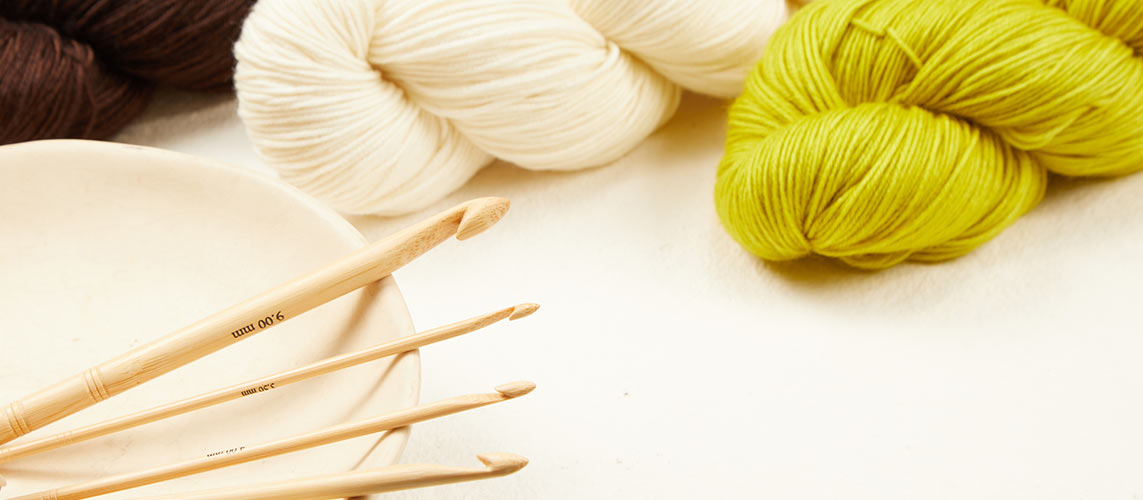Isn't it simply magical how a single skein of yarn, when paired with a single-ended crochet hook, can hold an entire spectrum of dreams? If you've ever marveled at intricate patterns of vibrant colour patterns intertwined in a crochet masterpiece and wondered, "How did they do that?" you're in the right place.
Mosaic and tapestry crochet patterns are about painting with yarn. It's where your inner Monet meets meticulous craftsmanship. Whether you're a beginner just venturing into colorwork crochet or looking for fresh inspiration, this guide will help you unravel the art of mosaic and tapestry techniques. So, grab your single-ended hooks, two different yarn colours, and start a vivid voyage!
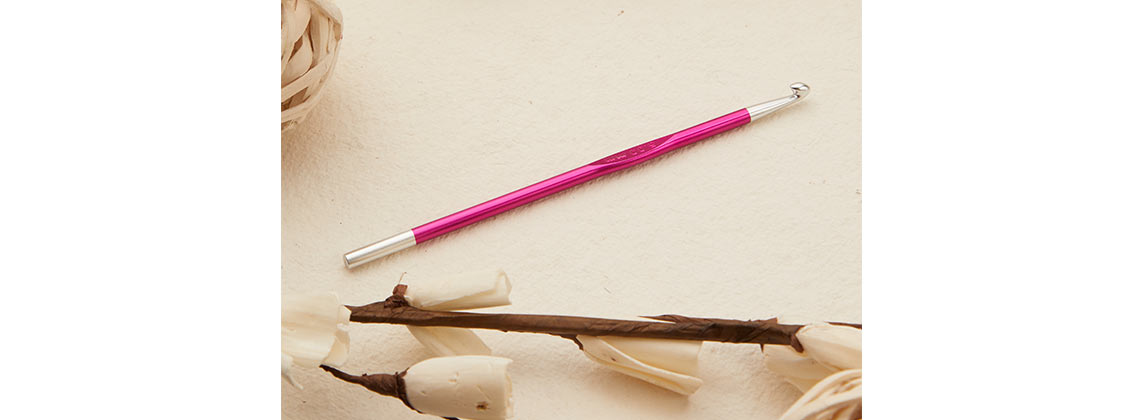
Tapestry vs. Mosaic Crochet
Here are two essential colourwork techniques in single-ended crochet that allow you to create visually stunning patterns and designs within your projects.
Tapestry Crochet: This technique involves carrying the unused colour(s) along the row or round as you work, crocheting over them with the active colour. It's great for creating detailed patterns and designs, especially in the round.
The Look:
- Dense and firm fabric, great for rugs, bags, or baskets.
- The design is typically mirrored on both sides, making it reversible.
- Tapestry designs are usually geometric.
- You have to practise your tension to avoid tightening the fabric.
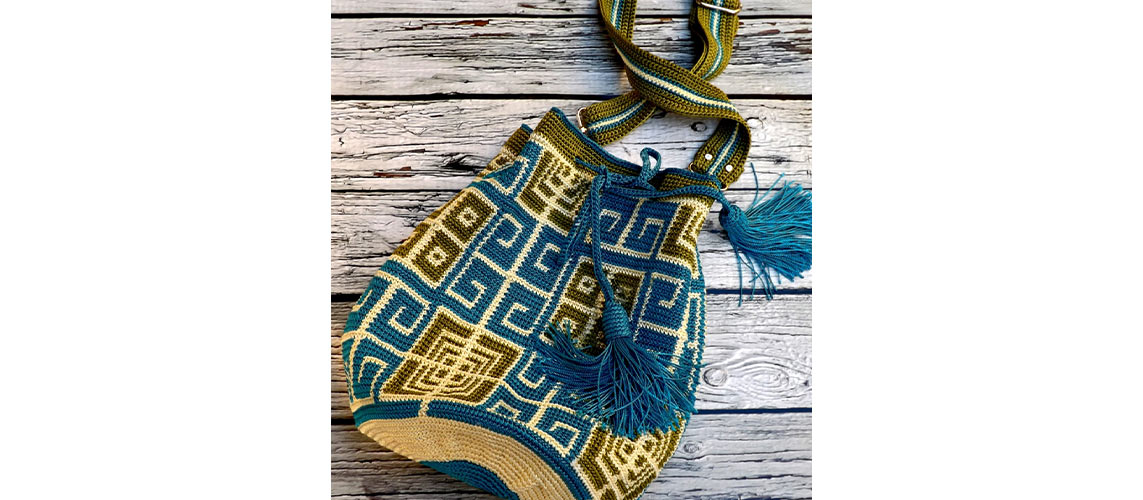
Mosaic Crochet: Use your single-ended hook to skip some of the stitches below with an overlay technique. This method creates a two-dimensional, tiled look. Mosaic crochet has a fascinating appeal that is achieved by changing between single and double crochet sticthes. While the single stitches are only worked into the back loop, your double crochets are stitched into the row below and through both loops. With this unique crochet method in your repertoire, you create visually stunning colourwork without juggling multiple yarns at once.
The Look:
- This method results in a textured, raised design.
- Allows for a wider variety of patterns than tapestry crochet.
- Loved for its intricate, tiled, or staggered patterns.
- The wrong side usually looks striped, making it less reversible.
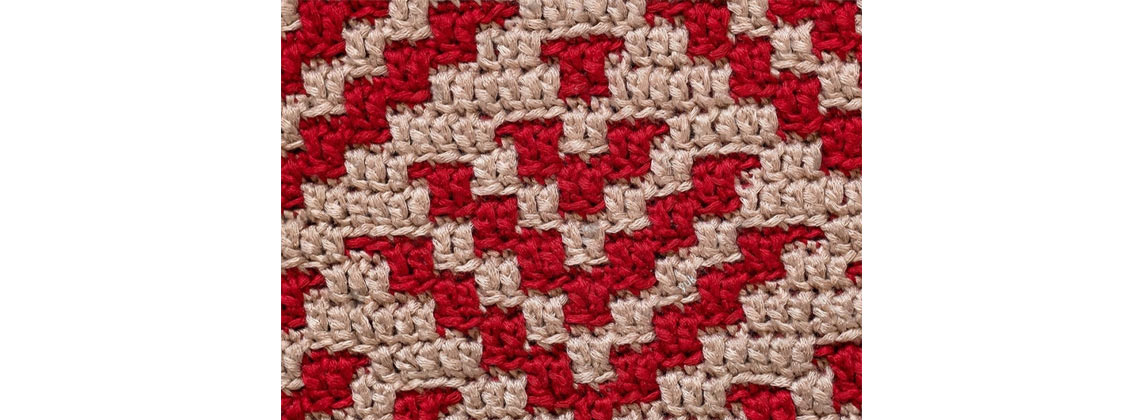
When working with colours on your single-ended crochet hooks, managing your yarn to prevent tangling is essential, especially when using multiple colours in the same row or round. Techniques like "bobbin work" can be handy, where each colour is wound onto a separate yarn dispenser, allowing for easier management of each yarn.
How to do tapestry crochet?
Step 1: Make a foundation chain with your base colour (colour A) according to your pattern.
Step 2: When introducing the second colour (colour B), lay the unused yarn over the working yarn (colour A) and crochet over it. This means you will not cut your unused yarn but instead will work your stitches around colour A, encasing it within the stitches of colour B.
Step 3: To change colours, insert your single-ended hook into the next stitch, yarn over with colour A, and pull up a loop. (Take a look at our comprehensive blog post on changing colours in crochet.)
You'll now have two loops on your hook. Pick up colour B (ensuring you continue to crochet over colour A), yarn over, and complete the stitch with colour B. Now, colour B becomes your working yarn, and colour A is carried along, hidden within your stitches.
Step 4: Watch your pattern or chart as you work. This will guide you on when to switch colours. Always change colours in the last step of the previous stitch to ensure a clean colour change.
It's crucial to ensure that the yarn you're carrying inside the hooked stitches isn't pulled too tight or left too loose. Ideally, it should lie flat within the stitches, invisible from the front and back of the work. Maintaining consistent tension will give your crocheted piece a neat appearance.
How to work Mosaic Crochet?
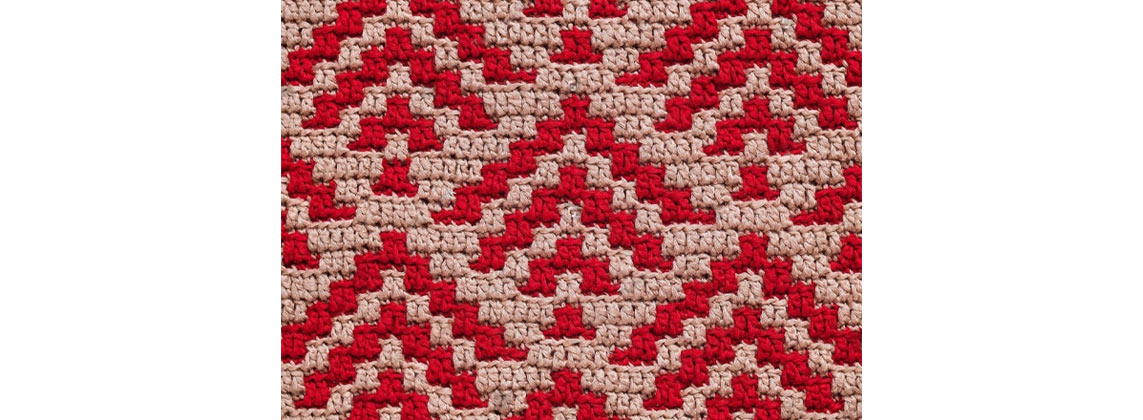
Mosaic crochet is a technique that creates intricate patterns using multiple colours. However, the main principle of mosaic crochet is you only have to manage one colour per row with your single-ended crochet hook. Feel intrigued? Here is a basic step-by-step guide based on two colours:
Begin by chaining a foundation chain in colour A according to the number required by your pattern. From here on you work in rows with the right side of your work always facing you. The yarn not in use is usually left hanging at the side of the work until it's picked up again. This means you cut the yarn after each colour change. This is the simplest form of Mosaic crochet.
Row 1 (colour A): Crochet a row of single crochet stitches. Switch to colour B: Before turning your work to start the next row, change to colour B. It is crucial to leave colour A hanging, as you'll continue with it later.
Row 2 (colour B): Crochet a row of single crochet stitches using colour B. Work each stitch into the back loop only.
Row 3 (colour B): This is where the mosaic pattern begins. Following your chart or pattern, you'll craft a double crochet down into the corresponding stitch two rows below, thereby "skipping" the row in between (this stitch will be left unworked in the current row). This creates the pattern and "colour jumps" that mosaic crochet is known for. Work your double crochets into both loops of your current stitch.
Switch to colour A: When you get to the end of Row 3, change back to colour A (simply drop colour B and pick up colour A).
Row 4 (colour A): Repeat the process, following the pattern chart, making double crochets into the stitches one or two rows below. However, from Row 4 onwards, you cut the yarn ends after each row, as you are always working your colours from the right side.
In the "Inset Mosaic" crochet approach, you'll find far fewer yarn tails to contend with. This means you'll work each line twice, both forward and back. You will transition to a new colour after completing both rows in one hue. There's no need to snip the previous yarn; carry it up the border edge until the next colour switch.
Mosaic crochet patterns can look complex, but the rhythm becomes quite intuitive once you get the hang of where to place your double crochets.
Both tapestry crochet and mosaic crochet can be worked by crocheters regardless of how they hold the single-ended crochet hook, whether it's the pencil or knife grip. The best way to find out which technique suits you best is to try the tapestry and the mosaic colourwork methods and see which one feels more comfortable or yields the results you prefer. Happy colourwork crochet!


